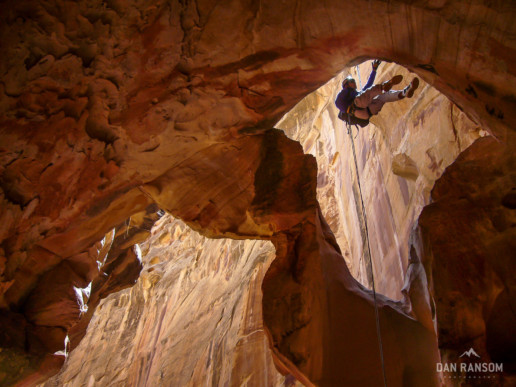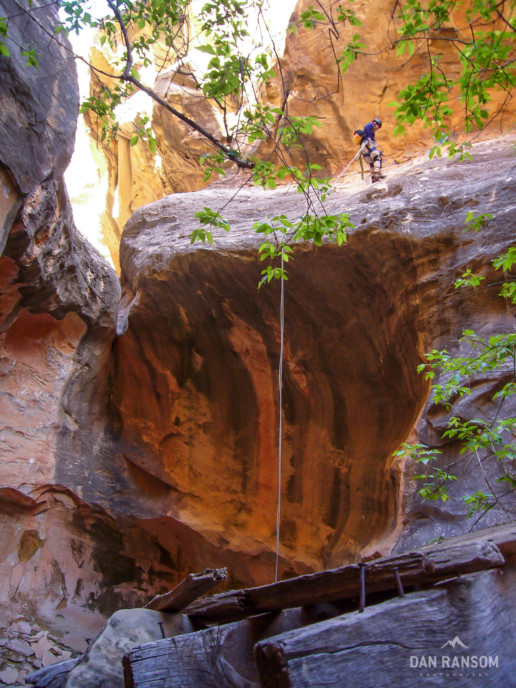
The Objective: Cassidy Canyon in Capitol Reef National Park. Notice the large arch at the top. That is the first rappel.
Monday was our last day in the canyons. All of the group had somewhere to be Monday afternoon, so we needed a fairly short one, that was somewhere between North Wash and Salt Lake. Ram and Tom had done Cassidy not too long ago, and decided it fit the criteria. Sounded good to me.
The canyon actually starts directly under Cassidy Arch, following the trail to the arch overlook. At one point in the past, a via ferrata type trail accessed the bottom half of the canyon, and there are still plenty of remnants of the old trail in the canyon. It is also a different type of canyon then the typical North Wash navajo slots. This one is in Kayenta, which seemed quite a bit more golden, more abrasive, and more prone to joints and weaknesses in the formation, resulting in less super skinny slot sections, and more grotto type areas. I found the canyon extremely photogenic and it had some fantastic scenery.
The last rappel in Cassidy. In the foreground are remnants from an old bridge that used to access the arch in the grotto upcanyon. The general public used to be able to climb up all the way to the arch, but most of the trail was taken down sometime ago.








Great pictures! I especially love the one of Tom on rap 2! I’ve done Cassidy half a dozen times now and never had the vision to see the photo opportunities you’ve found. I’d love to do a canyon with you some time and learn from your photo expertise…. feel free to contact me if/when you’ll be in the Capitol Reef area again.
-Malia
Kayenta s.s? How certain are you of this? The NPS website suggests it is also Wingate stripped of its protective Kayenta caprock; as seen in the Muley Twist area. http://www.nps.gov/care/planyourvisit/uppermuley.htm
after
O.K. I finally got a satisfying response from a reliable source. Here is the email they sent me. Adam,
After consulting with park staff, geologic maps of the park and several park publications on geology, the consensus is that the arches in Upper Muley Twist are indeed the Kayenta Formation, which is the same formation that Hickman Bridge and Cassidy Arch are composed of. There seems to be some disagreement of exactly where the contact with the Kayenta and Wingate is.. I asked BYU geology professor Tom Morris that exact question and there wasn’t a real concise agreement on that. I hope this helps clear up any confusion on your question and if you have any others feel free to contact us here at Capitol Reef.
Sincerely,
John Kuehnert